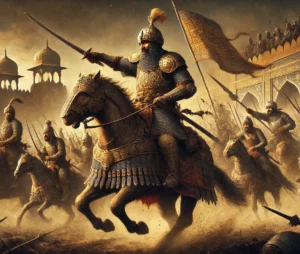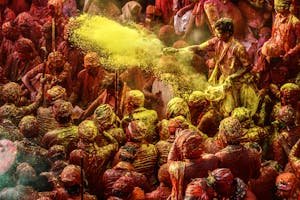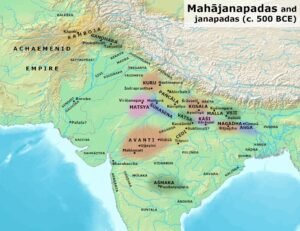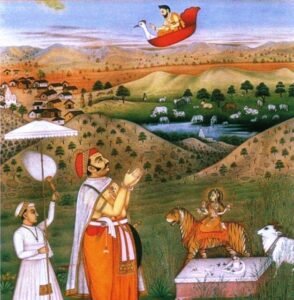When the history of medieval India is told, few figures are as shadowed by legend as Jaichandra of Kannauj (c. 1170–1194 CE). For centuries, ballads and folklore have branded him the archetypal traitor — the king who turned against Prithviraj Chauhan and invited the invaders into India. Yet behind the myths lies a very different story: that of a powerful monarch who presided over one of the wealthiest dynasties of North India, only to meet his end in the crucible of foreign conquest.
✅ Reign: c. 1170–1194 CE
✅ Dynasty: Gahadavalas of Kannauj
✅ Capitals: Kannauj and Varanasi
✅ Conflict: Battle of Chandawar (1194 CE) vs. Muhammad of Ghor
✅ Significance: Last major Hindu ruler of Kannauj; misremembered in legend as a traitor, but in truth, a fallen defender of his empire.
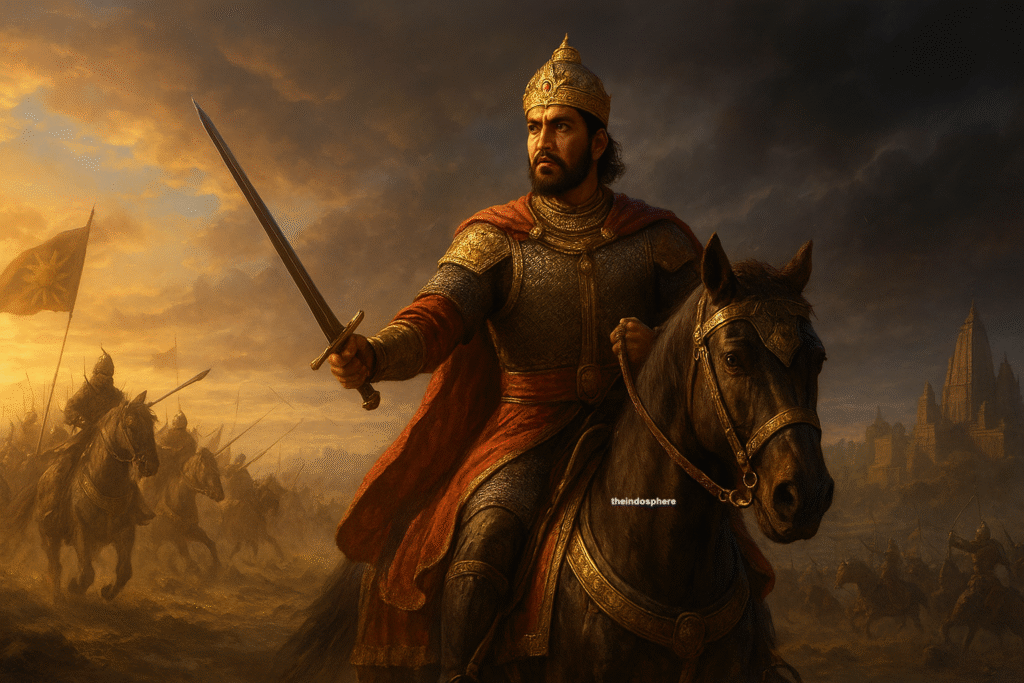
The World of the Gahadavalas
By the late 11th century, the old centers of imperial power in northern India — Kannauj of the Pratiharas, Bihar of the Palas — had fragmented. In their place rose the Gahadavala dynasty, a line of rulers who controlled the Gangetic plains from Varanasi to Kannauj.
- The Gahadavalas were staunch defenders of Hindu dharma.
- They endowed temples in Varanasi, built ghats along the Ganga, and supported Brahmanical learning.
- Inscriptions show them funding Vishnu, Shiva, and Surya shrines, making Varanasi one of the richest religious cities of the age.
When Jaichandra ascended the throne around 1170 CE, he inherited a flourishing kingdom. His father Vijayachandra had consolidated Gahadavala control, and under Jaichandra the empire reached its widest extent — stretching across modern-day Uttar Pradesh and parts of Bihar, with Kannauj as its imperial capital and Varanasi as its spiritual heart.
The King and His Court
Contemporary inscriptions portray Jaichandra as a king of immense pride and authority. He styled himself with high titles such as “Maharajadhiraja” (king of great kings) and emphasized his Rathore lineage.
- His court was known for patronizing poets, Brahmins, and scholars.
- He commissioned temples and ghats in Varanasi, strengthening the city’s role as a holy center.
- The Gahadavalas were also noted patrons of pilgrimage infrastructure, ensuring that travelers to sacred cities were provided for.
Unlike the myth that casts him as a weak ruler, Jaichandra presided over a strong, well-organized kingdom with considerable wealth and resources — especially the famed Ganga valley trade routes that connected north India to Bengal and beyond.
The Myth of Betrayal
No story has shaped Jaichandra’s reputation more than that of the Prithviraj Raso, a later medieval epic written centuries after his death.
According to this legend, Jaichandra’s daughter Samyukta (Sanyogita) was in love with Prithviraj Chauhan, ruler of Ajmer and Delhi. Jaichandra, humiliated by their romance, excluded Prithviraj from her swayamvara (marriage ceremony). Prithviraj abducted Samyukta in a daring escape, enraging Jaichandra. To avenge the insult, Jaichandra supposedly allied with Muhammad of Ghor against Prithviraj, leading to the Chauhan king’s downfall at the Second Battle of Tarain (1192 CE).
But modern historians reject this as literary fiction. Neither contemporary Persian chronicles (like Hasan Nizami’s Taj-ul-Maasir) nor Sanskrit inscriptions mention such betrayal. Jaichandra had his own conflicts with the Ghurids and never allied with them.
Thus, the image of Jaichandra as a “traitor” is largely a product of folklore, not historical reality.
The Clash with the Ghurids
The real historical confrontation came two years after Tarain. In 1194 CE, Muhammad of Ghor marched east into the Gahadavala dominions, seeking to break Jaichandra’s power and secure control of the Gangetic plains. The decisive clash took place at Chandawar (near Etawah, Uttar Pradesh).
Medieval Persian chroniclers describe a dramatic battle: Jaichandra led a massive host of infantry, cavalry, and war elephants. At first, the Gahadavala forces pressed hard, but the Ghurids’ disciplined cavalry tactics turned the tide. As the Yamuna River became a bloody crossing ground, Jaichandra himself was struck down.
His death in battle was a turning point. The Gahadavalas were shattered, Kannauj and Varanasi fell soon after, and the Ghurids established dominance over the Gangetic heartland.
The End of an Empire
The fall of Jaichandra marked more than the death of a king. It was the end of Kannauj as an imperial capital, a city that for centuries had symbolized sovereignty in North India. With his defeat:
- The Gahadavalas lost their authority.
- The Ghurid sultans advanced their frontier to the heart of India.
- Delhi, not Kannauj, would emerge as the seat of power in the coming centuries.
In many ways, Jaichandra’s fall represents the closing of the old Rajput age of independence and the beginning of Delhi Sultanate dominance in northern India.
Jaichandra Legacy Reconsidered
Jaichandra’s name lived on, but not kindly. Later poets and storytellers made him the “Judas” of Indian history — a convenient symbol of betrayal. But the records suggest otherwise – He was a patron of temples, learning, and pilgrimage; he died fighting the foreign invader, not aiding him; his reign was the last gasp of Kannauj’s ancient imperial tradition, stretching back to Harsha and the Pratiharas.
If anything, Jaichandra deserves to be remembered not as a traitor, but as the last defender of Kannauj, the king who stood at the gates of history as the old order gave way to a new one.

